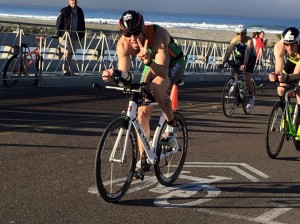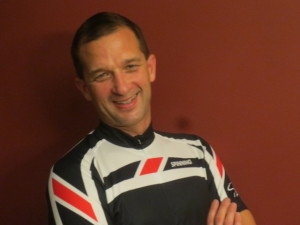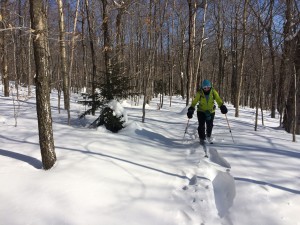Just today, June 18, 2015, we learn that yet another cyclist has been killed while riding a popular cycling route in Ferrisburgh, Vermont. Once again the fatality was caused by a drunk driver. This is the third time in recent weeks the small state of Vermont has suffered loss of human life and a blow to what should be a safe, enjoyable and healthy outdoor activity. Ironically what follows was printed in the Rutland Herald & Times Argus recently.
ROAD NOTES
On two feet or skinny tires, behind the wheel or astride a horse, driving a tractor or pushing a stroller, here are some road notes of interest.
Submitted by Linda Freeman for 6-7-2015
Active Vermont
Though unlikely, streets and roads are the new sexy, a hot topic being discussed, written about, argued over and complained nationwide and throughout Vermont where individual voices are heard. Traffic fatalities, whether motorist, cyclist or pedestrian, are a slap-in-the-face wake-up call to action.
An article in the July issue of Bicycling Magazine, “The Secret to Safer Cities,” suggests that designated and protected bike (and pedestrian) lanes are the answer to the growing number of cycling and pedestrian accidents. Could this concept be relevant for a small state like Vermont?
From 2009 to 2014 Rutland pedestrians suffered 4 fatalities and 73 injuries in traffic related incidents. This spring, through a US Department of Transportation grant for a pedestrian audit, VTrans selected Rutland as the site to be studied. Jon Kaplan, Bicycle and Pedestrian Program Manager of the Vermont Agency of Transportation, said the audit provides ways in which to “move forward – has recommendations for both things to address behavior and infrastructure changes. It also outlines the process to be used for similar assessments in other communities.” (Go to www.vtrans.vermont.gov. Check out the 2015 Bicycle and Pedestrian Program.)
Susan Schreibman, Assistant Director of the Rutland Regional Planning Commission, an active participant in the audit, speaks to moving forward. “Save the date-April 1, 2016,” she said, “for the bi-annual Walk Bike Summit in downtown Rutland. Different tracts will focus on the economic impact of a walkable and bikeable community, engineering and Complete Streets and education. Mobile workshops will follow on 4/2.”
From class 4 roads to I89, from traffic laws designed to accommodate farmers to discussions of safety for commute, recreation or competition, streets and roads are the star players. Perhaps, however, what should be said is that the people who use streets and roads assume leading roles.
When it comes to safety, it is about behaviors, attitudes and infrastructure.
Local Motion, newly merged with Vermont Bicycle and Pedestrian Coalition, began as an organization in the Burlington area but has grown to function statewide. “Your Voice for Active Transportation and Recreation, Local Motion … [promotes] people-powered transportation and recreation for healthy and sustainable Vermont communities.” (www.localmotion.org)
Recently I met with Emily Boedecker, Executive Director of Local Motion. “We’re talking about people who bike, people who walk, people who drive. We must keep the focus on the human being and not the vehicle,” she said. “I don’t care if you’re wearing lycra, there’s an underlying element – the system that we move on, the roads, how they’re designed, built and maintained. It is also the other users of that system. Our actions make our roads dangerous.”
Boedecker believes that behaviors and attitudes can change. Compare accepting shared use of streets and roadways with previous cultural adaptations with respect to smoking, drunk driving and littering. Does any of this still occur? Yes, but public awareness and, to a large extent, practice has changed over the years.
“The bottom line,” Boedecker said, “is that everyone can individually choose to make our roads safer in the same place and the same infrastructure.”
While some routes are designated for use by motor vehicles only, others such as recreational paths prohibit motorized travel. As for the remainder, it is no longer an issue of who should or shouldn’t be on the road. “It is what it is” and sharing the road is here to stay.
Boedecker speaks of the invitation that certain conditions offer to users: a paved road, scenic path, friends and bike racks encourage walking, running and riding. To those who already do so, this is preaching to the choir, but there are resources available that prove useful.
Local Motion is one that provides advocacy to efforts across the state. “VTrans is trying to be open and accessible,” Boedecker said “and demonstrates seriousness to accommodate all kinds of road users.” For example, when a recent VTrans project asked the public to comment on where they would like to see bike lanes, there were over 2,100 responses.
Vtrans also offers two websites to help plan summer outings and routes for motorists and cyclists with up to the minute data on construction and conditions in progress as well as planned. http://vtransparency.vermont.gov/ and http://vtransmaps.vermont.gov/vtrans511listing.asp, Vermont 511 Online Map.
Have you heard of the 11’ line? With the different widths of Vermont roads, one solution might be to measure 11’ out from the center line, paint a stripe, and end up with what width is available for a shoulder. “With a broader coalition, we want to be able to celebrate when a local town crew restripes at 11’,” Boedecker said. “Local advocates can have this conversation.”
Information and education may be the key to today’s challenges and future usage.
“Everyday Bicycling” is not about riding your bike every day, but rather is a project offered, free of charge, to organizations and businesses that want to promote biking as transportation and healthy exercise to their constituents and employees. Local Motion has “gone out around the state for partners for hosting classes and bringing people in,” Boedecker said. “There are 12 contracted trainers throughout Vermont.” Adult skills workshops and coaching sessions have been presented most recently in Northfield, Rutland and Brattleboro. (To inquire about a workshop in your area, contact Mary Catherine Graziano at marycatherine@localmotion.org or 802-861-2700 x106.)
Young students in Driver’s Education courses learn the rules of the road, and the Vulnerable User laws. Young cyclists learn their part in riding safely in the Kohl’s for Kids, Bike Smart Program, a game-based bike skills curriculum that has been presented in eight counties to 5,096 kids, 40% of whom were low income. “The goal,” Boedecker said, “is to reach 7,000.” Local Motion provides a trailer (now there are two), loaded with bikes and helmets, training for teachers on how to deliver the bike curriculum, and lots of fun mixed in with the learning.
In addition to road skills rides, this program gets kids outside, gives them an option to get to school, an opportunity for fun, addresses health (and the obesity rate), teaches respect for rules and law enforcement officers and encourages each child to act as a productive member of a community, helping each other along the way.
Local Motion is not the only bicycle and pedestrian advocacy in the state, but it is one with experience and exists as a connector for individuals, communities and diverse issues.
“We can all say yes to walking and biking in whatever shape or form works for us,” Boedecker said. Having migrated to Montpelier a decade ago, Boedecker brings the best of her childhood with her. She grew up in a mining and farming village in England and spent her first 20 years outside on bikes and walking. “My bike was my pony,” she said. “I enjoyed the luxury of being independent and mobile.”
Since then she has mountain biked in California, hiked and skied in France. Today she bikes, hikes, walks, paddles and digs her fingers in the dirt. “I don’t consider myself an expert,” she said. “I am a person who does activities. There is a way for each to get outside and move.”
There is much to be said and Boedecker wants to know. “I want to hear from as many people as possible. I want to hear what needs there are. There’s a tipping point for safety that is incredibly low.” Once that point is reached, “safety improves for everybody.”
Contact Emily Boedecker at Emily@localmotion.org or (802)861-2700 ext 105.













